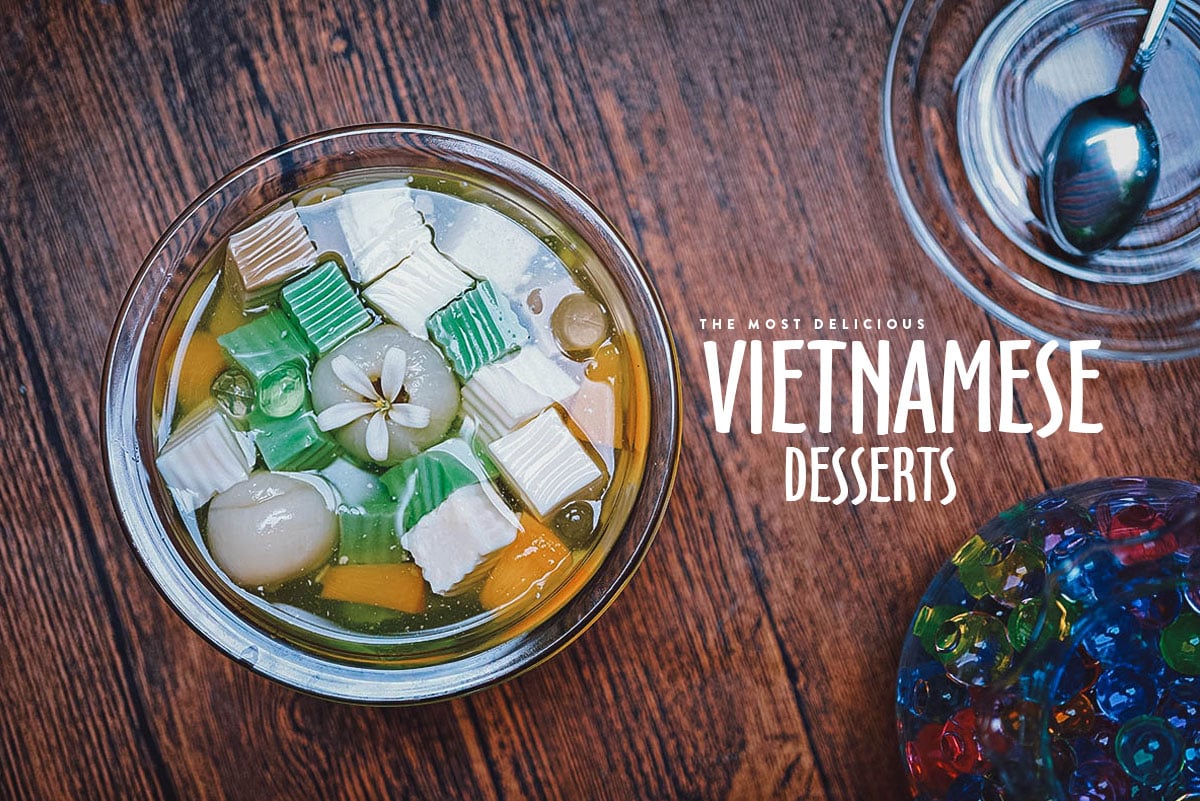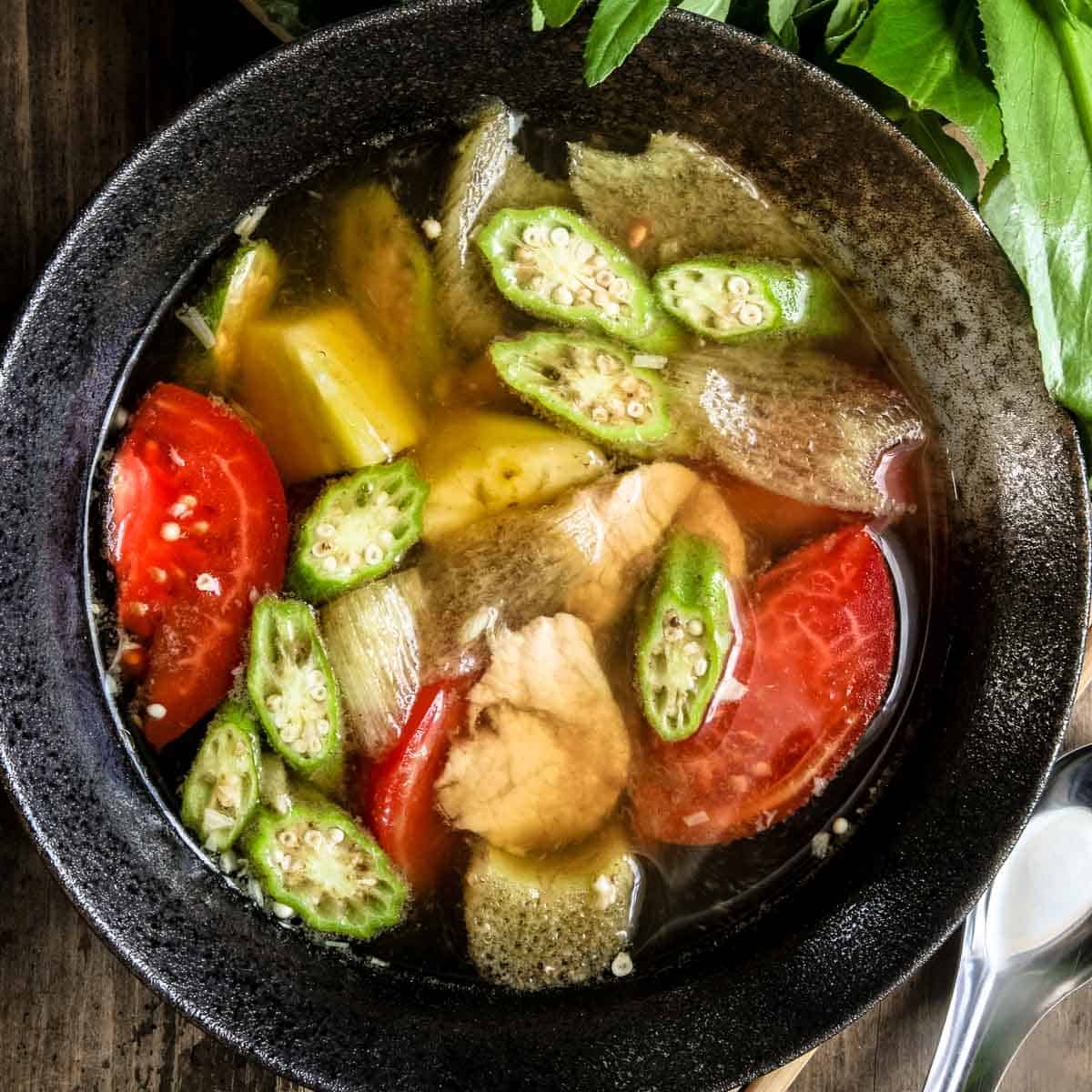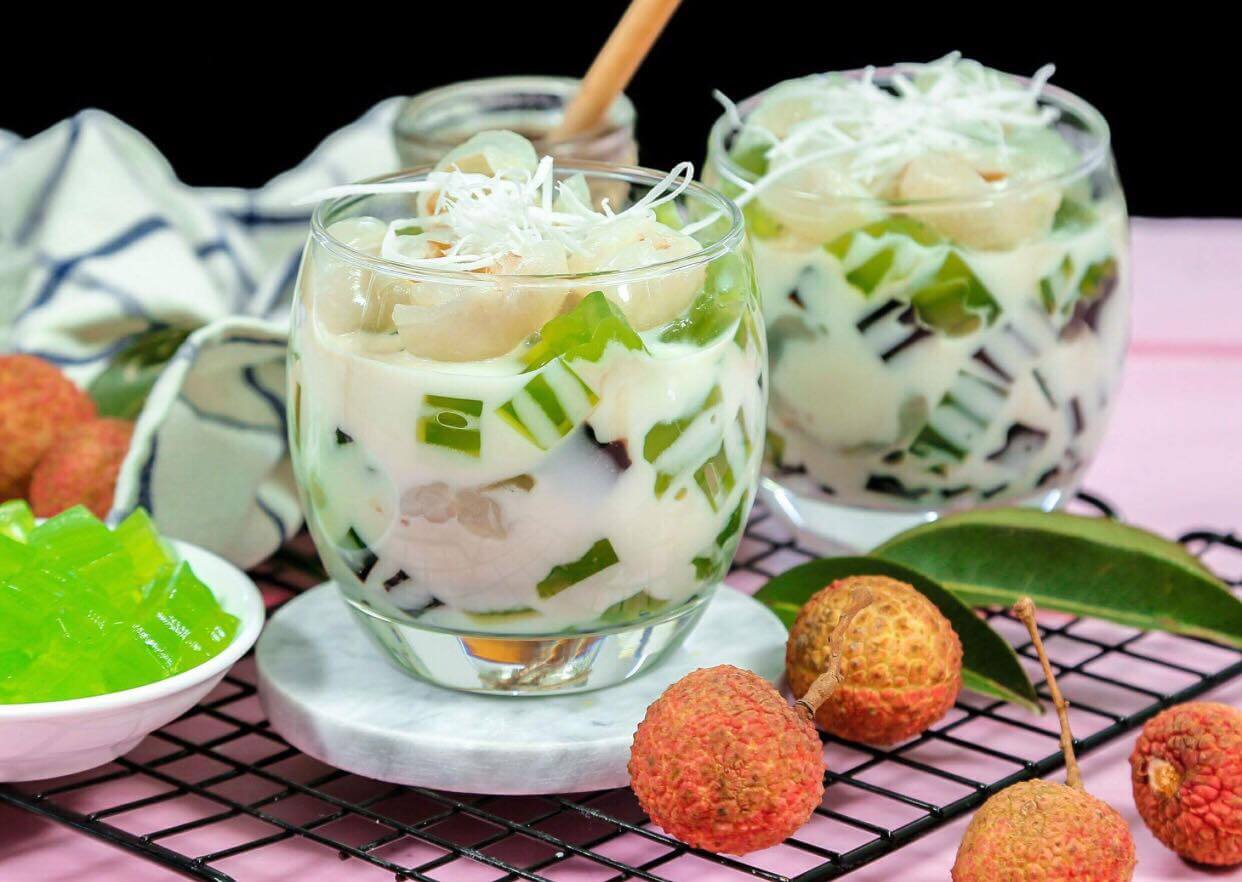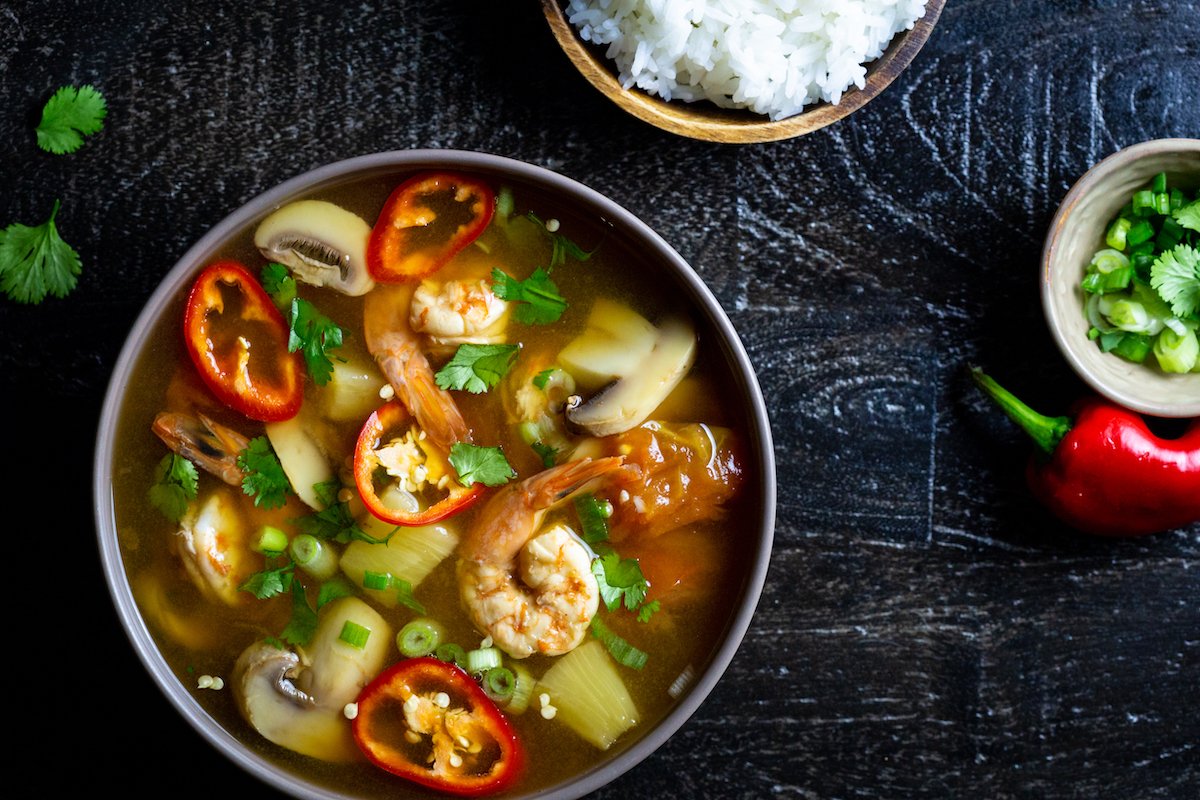Vegan Vietnamese sweet soup dessert recipes offer a delightful fusion of flavors and textures, showcasing the versatility of plant-based cuisine. In Vietnam, sweet soups are a beloved tradition, often enjoyed as a comforting treat or a refreshing dessert. These delectable creations often feature a symphony of textures, with soft, silken tofu mingling with chewy tapioca pearls, all enveloped in a warm, fragrant broth. The addition of fresh fruits, like ripe mangoes or juicy dragon fruit, adds a burst of sweetness and vibrant color. Beyond their deliciousness, vegan Vietnamese sweet soup desserts also offer a wealth of health benefits, packed with vitamins, minerals, and antioxidants.
Veganism is gaining increasing popularity in Vietnam, as people seek healthier and more sustainable dietary choices. This shift has led to a surge in demand for vegan versions of traditional Vietnamese dishes, including sweet soups. Vegan chefs and home cooks are creatively adapting classic recipes, using plant-based alternatives like coconut milk, soy milk, and silken tofu to create mouthwatering desserts that are both delicious and compassionate. From the classic Che Chuoi (Banana Sweet Soup) to the refreshing Che Thap Cam (Rainbow Sweet Soup), vegan Vietnamese sweet soup desserts offer a diverse range of flavors and textures, inviting you to embark on a culinary adventure.
Ingredients
Vietnamese sweet soup desserts, often called chè, are known for their vibrant colors, delicate flavors, and refreshing textures. They’re a delightful way to end a meal or enjoy a sweet treat any time of day. The beauty of chè lies in its versatility; you can find countless variations, each with its unique combination of ingredients. The common thread that binds them is the use of plant-based ingredients, making them naturally vegan.
Vegan Ingredients in Vietnamese Sweet Soup Desserts
These ingredients are the foundation of many Vietnamese sweet soup desserts, contributing to their unique flavors and nutritional benefits.
- Beans: Mung beans, black-eyed peas, red beans, and adzuki beans are staples in chè. They provide a creamy texture, a subtle sweetness, and a good source of fiber and protein.
- Lentils: Green lentils and red lentils add a hearty texture and a nutty flavor to sweet soups. They are a great source of protein and fiber, and they are also rich in iron.
- Taro: This starchy root vegetable adds a unique, earthy flavor and a creamy texture to chè. It is a good source of fiber, vitamin C, and potassium.
- Sweet Potato: Sweet potatoes, especially the purple variety, bring a vibrant color and a naturally sweet flavor to chè. They are a good source of fiber, vitamin A, and vitamin C.
- Jackfruit: Jackfruit, when young and unripe, has a texture similar to meat and adds a unique, subtly sweet flavor to chè. It is a good source of fiber, vitamin C, and potassium.
- Fruits: Fresh fruits like mango, banana, dragon fruit, and papaya are often added to chè for their sweetness and refreshing flavors. They are excellent sources of vitamins, minerals, and antioxidants.
- Coconut: Coconut milk, coconut cream, and shredded coconut are common ingredients in chè, adding a creamy texture and a delicate sweetness. They are a good source of healthy fats, fiber, and minerals.
- Pandan Leaves: These fragrant leaves add a unique, subtle sweetness and a vibrant green color to chè. They are also believed to have calming and digestive properties.
- Sago Pearls: These small, translucent tapioca pearls add a chewy texture and a slightly sweet flavor to chè. They are a good source of carbohydrates and fiber.
Nutritional Benefits of Vegan Ingredients in Vietnamese Sweet Soup Desserts, Vegan vietnamese sweet soup dessert recipe
The ingredients used in chè offer a wide range of nutritional benefits, making them a delicious and healthy dessert option.
- High in Fiber: Many ingredients, such as beans, lentils, taro, sweet potatoes, and jackfruit, are excellent sources of dietary fiber. Fiber helps regulate digestion, promotes satiety, and supports healthy blood sugar levels.
- Rich in Vitamins and Minerals: Chè is often packed with essential vitamins and minerals. Fruits contribute vitamins A, C, and K, while sweet potatoes are a good source of beta-carotene, which converts to vitamin A in the body.
- Source of Protein: Lentils, beans, and jackfruit provide a good amount of plant-based protein, making chè a satisfying and filling dessert.
- Antioxidant Power: Many ingredients in chè, particularly fruits and pandan leaves, are rich in antioxidants, which help protect cells from damage caused by free radicals.
Vegan Ingredients and Their Culinary Purposes
| Vegan Ingredient | Vietnamese Name | Culinary Purpose | Nutritional Benefits |
|---|---|---|---|
| Mung Beans | Đậu xanh | Adds creaminess and subtle sweetness | Fiber, protein, iron |
| Black-eyed Peas | Đậu đen | Provides a hearty texture and earthy flavor | Fiber, protein, iron |
| Red Beans | Đậu đỏ | Adds a creamy texture and a slightly sweet flavor | Fiber, protein, iron |
| Adzuki Beans | Đậu đỏ | Adds a creamy texture and a slightly sweet flavor | Fiber, protein, iron |
| Green Lentils | Đậu lăng xanh | Adds a hearty texture and a nutty flavor | Protein, fiber, iron |
| Red Lentils | Đậu lăng đỏ | Adds a hearty texture and a nutty flavor | Protein, fiber, iron |
| Taro | Củ sắn | Adds a unique, earthy flavor and a creamy texture | Fiber, vitamin C, potassium |
| Sweet Potato | Khoai lang | Adds a vibrant color and a naturally sweet flavor | Fiber, vitamin A, vitamin C |
| Jackfruit | Mít | Adds a unique, subtly sweet flavor and a meaty texture | Fiber, vitamin C, potassium |
| Mango | Xoài | Adds sweetness and a tropical flavor | Vitamin C, fiber, antioxidants |
| Banana | Chuối | Adds sweetness and a creamy texture | Potassium, fiber, vitamin B6 |
| Dragon Fruit | Thanh long | Adds a vibrant color and a slightly sweet flavor | Vitamin C, fiber, antioxidants |
| Papaya | Đu đủ | Adds sweetness and a refreshing flavor | Vitamin C, fiber, antioxidants |
| Coconut Milk | Nước cốt dừa | Adds creaminess and a delicate sweetness | Healthy fats, fiber, minerals |
| Coconut Cream | Kem dừa | Adds richness and a delicate sweetness | Healthy fats, fiber, minerals |
| Shredded Coconut | Dừa nạo | Adds a chewy texture and a sweet flavor | Healthy fats, fiber, minerals |
| Pandan Leaves | Lá dứa | Adds a unique, subtle sweetness and a vibrant green color | Antioxidants, calming and digestive properties |
| Sago Pearls | Hạt sago | Adds a chewy texture and a slightly sweet flavor | Carbohydrates, fiber |
Popular Vegan Vietnamese Sweet Soup Desserts
Vietnamese sweet soups, often referred to as chè, are a beloved dessert enjoyed throughout the country. They are known for their refreshing and comforting flavors, as well as their vibrant colors and textures. These desserts are a perfect way to end a meal or enjoy a sweet treat on a hot day. Many of these traditional sweet soups are naturally vegan, making them accessible to those following a plant-based diet.
Popular Vegan Vietnamese Sweet Soup Desserts
These are some of the most popular vegan Vietnamese sweet soup desserts:
- Chè Chuối (Banana Sweet Soup): This classic dessert features soft, sweet bananas cooked in a rich coconut milk broth. It is often topped with chewy tapioca pearls and a sprinkle of toasted sesame seeds.
- Chè Bưởi (Pomelo Sweet Soup): This refreshing dessert is made with sweet and tangy pomelo segments, cooked in a light sugar syrup. It is often served with a drizzle of coconut milk and a garnish of fresh mint leaves.
- Chè Đậu Đen (Black Bean Sweet Soup): This hearty dessert features black beans cooked until soft and creamy. It is often flavored with a touch of pandan leaf and topped with a generous amount of coconut milk.
- Chè Sắn Dừa (Cassava and Coconut Sweet Soup): This dessert features soft, chewy cassava root cooked in a fragrant coconut milk broth. It is often topped with sweet coconut flakes and a drizzle of palm sugar syrup.
- Chè Bột Lọc (Tapioca Flour Balls Sweet Soup): This dessert features chewy tapioca flour balls filled with a sweet mung bean paste. It is often served in a light sugar syrup with a drizzle of coconut milk.
| Dessert | Vietnamese Name | Key Ingredients | Flavors |
|---|---|---|---|
| Banana Sweet Soup | Chè Chuối | Bananas, Coconut Milk, Tapioca Pearls, Sesame Seeds | Sweet, Creamy, Nutty |
| Pomelo Sweet Soup | Chè Bưởi | Pomelo, Sugar Syrup, Coconut Milk, Mint Leaves | Sweet, Tangy, Refreshing |
| Black Bean Sweet Soup | Chè Đậu Đen | Black Beans, Pandan Leaf, Coconut Milk | Sweet, Creamy, Earthy |
| Cassava and Coconut Sweet Soup | Chè Sắn Dừa | Cassava Root, Coconut Milk, Coconut Flakes, Palm Sugar Syrup | Sweet, Creamy, Coconutty |
| Tapioca Flour Balls Sweet Soup | Chè Bột Lọc | Tapioca Flour Balls, Mung Bean Paste, Sugar Syrup, Coconut Milk | Sweet, Chewy, Creamy |
Recipes: Vegan Vietnamese Sweet Soup Dessert Recipe
Vietnamese sweet soups are a delightful way to end a meal, offering a balance of sweetness and refreshment. The recipes are often passed down through generations, with each family adding their own unique twist. Here’s a classic vegan sweet soup recipe that showcases the essence of this beloved dessert.
Classic Vegan Vietnamese Sweet Soup
This recipe features mung beans, tapioca pearls, and coconut milk, creating a creamy and comforting soup with a subtle sweetness.
Ingredients
| Ingredient | Quantity | Role in Recipe |
|---|---|---|
| Mung Beans | 1 cup | Provides a creamy texture and earthy flavor |
| Tapioca Pearls | 1/2 cup | Adds chewy texture and visual appeal |
| Coconut Milk | 1 can (13.5 oz) | Contributes richness and a subtle sweetness |
| Water | 4 cups | Used for cooking the mung beans and tapioca pearls |
| Sugar | 1/2 cup | Sweetens the soup to taste |
| Salt | 1/4 teaspoon | Enhances the overall flavor |
Instructions
- Rinse the mung beans thoroughly and soak them in water for at least 2 hours, or overnight for a softer texture.
- In a large pot, combine the soaked mung beans, water, and a pinch of salt. Bring to a boil, then reduce heat to low and simmer for 30-40 minutes, or until the beans are tender.
- While the mung beans are simmering, prepare the tapioca pearls according to package instructions. Typically, this involves boiling them in water for 5-7 minutes, or until they become translucent.
- Once the mung beans are cooked, add the coconut milk and sugar to the pot. Stir well and bring to a simmer. Taste and adjust the sweetness as needed.
- Add the cooked tapioca pearls to the soup and stir gently to combine.
- Serve the sweet soup warm or chilled, garnished with a sprinkle of toasted sesame seeds or a drizzle of coconut cream for extra richness.
Variations and Adaptations
Vegan Vietnamese sweet soup desserts offer a canvas for culinary creativity, allowing for endless variations and adaptations to suit personal preferences and dietary needs. By exploring different ingredients and techniques, you can create unique flavor profiles and textures that cater to a wide range of tastes.
Adapting Sweetness Levels
The sweetness of vegan Vietnamese sweet soup desserts can be adjusted to your liking. For those who prefer a less sweet option, you can reduce the amount of sugar or use a natural sweetener like stevia or monk fruit. Conversely, if you crave a more intense sweetness, you can increase the sugar content or add a touch of honey or agave nectar.
Exploring Flavor Profiles
The versatility of vegan Vietnamese sweet soup desserts allows for the creation of a wide range of flavor profiles. You can experiment with different fruits, vegetables, and spices to achieve unique taste combinations.
For instance, adding a pinch of cinnamon or cardamom to a sweet potato soup can enhance its warmth and complexity, while a squeeze of lime juice can provide a refreshing tang.
Ingredient Substitutions
Many ingredients in vegan Vietnamese sweet soup desserts can be easily substituted to accommodate dietary restrictions or personal preferences. For example, coconut milk can be replaced with soy milk, almond milk, or rice milk for those with coconut allergies. Similarly, tapioca pearls can be swapped for mung beans, red beans, or even a mixture of different beans for a more varied texture.
Customizing Textures
The texture of vegan Vietnamese sweet soup desserts can also be customized. If you prefer a thicker consistency, you can add a thickening agent like arrowroot powder or cornstarch. For a lighter and more refreshing soup, you can reduce the amount of thickening agent or use a thinner liquid base.
Serving and Presentation
Vietnamese sweet soups are often enjoyed warm, but can also be served chilled, especially during hot weather. The presentation of these desserts is as important as the taste, and there are many traditional ways to enhance the visual appeal and create a delightful dining experience.
Traditional Serving Methods
Traditionally, vegan Vietnamese sweet soups are served in individual bowls, often made of ceramic or porcelain. These bowls are usually small to medium in size, allowing for a comfortable serving portion. They are often decorated with intricate designs and patterns, adding a touch of elegance to the presentation.
Creating Visually Appealing Presentations
Here are some tips for creating visually appealing presentations for your vegan Vietnamese sweet soup desserts:
- Use vibrant colors: The natural colors of the ingredients, such as the bright orange of carrots, the deep purple of sweet potatoes, or the vivid green of pandan leaves, create a visually appealing contrast.
- Layer ingredients: Create layers of different textures and colors by arranging the ingredients in a visually appealing way. For example, you can place the heavier ingredients, such as beans or tapioca pearls, at the bottom of the bowl and top them with lighter ingredients, such as coconut milk or fruit pieces.
- Add garnishes: Garnishes, such as chopped nuts, toasted sesame seeds, or fresh herbs, add a touch of elegance and enhance the flavor of the dessert.
The Role of Garnishes and Accompaniments
Garnishes and accompaniments play a crucial role in enhancing the flavor and presentation of vegan Vietnamese sweet soup desserts.
- Fresh herbs: Fresh herbs, such as mint, basil, or cilantro, add a refreshing and aromatic element to the soup. They also provide a vibrant color contrast, adding visual appeal to the dessert.
- Toasted nuts: Toasted nuts, such as peanuts, cashews, or almonds, add a crunchy texture and nutty flavor to the soup. They also create a visually appealing contrast with the smooth texture of the soup.
- Sweetened condensed milk: A drizzle of sweetened condensed milk adds a touch of sweetness and creaminess to the soup. It also creates a beautiful visual contrast with the colorful ingredients.
Final Thoughts
The world of vegan Vietnamese sweet soup desserts is a vibrant tapestry of flavors, textures, and traditions. These delectable creations are a testament to the creativity and resourcefulness of Vietnamese cuisine, showcasing the beauty of plant-based ingredients. Whether you are a seasoned vegan or simply curious to explore new culinary horizons, these recipes offer a delicious and rewarding journey. So, gather your ingredients, embrace the spirit of Vietnamese culinary traditions, and prepare to be delighted by the enchanting world of vegan Vietnamese sweet soup desserts. Enjoy the journey!
Vegan Vietnamese sweet soup desserts are a delightful fusion of textures and flavors, offering a refreshing escape from the ordinary. If you’re looking for an easy and delicious way to satisfy your sweet tooth, check out this easy vegan Vietnamese sweet soup dessert recipe that’s sure to impress.
From classic mung bean soup to the vibrant flavors of taro and coconut, these vegan Vietnamese sweet soup desserts are a journey for the senses, bringing a touch of Southeast Asian magic to your kitchen.





1 thought on “Vegan Vietnamese Sweet Soup Dessert Recipe: A Delicious Journey”